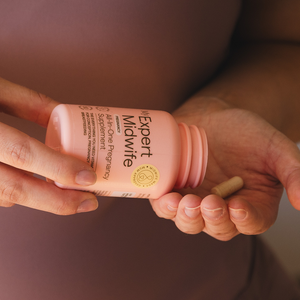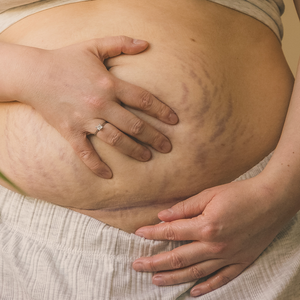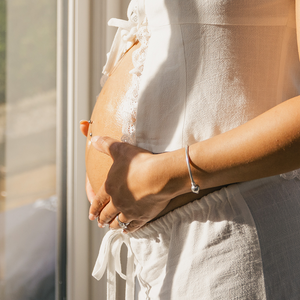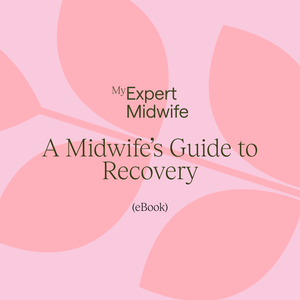Author: Debs Neiger Independent Midwife
This is the big question for many. Most women find it hard to imagine that their vagina/perineum/vulva will stretch enough to accommodate a WHOLE human baby during the expulsive stage of labour (also called second stage) without major trauma. Even if they have had a baby before, the thought of that last stretch before holding the baby is daunting.
For many it feels like that there is nothing they can do other than grit their teeth and hope for the best.
So, what if I told you there ARE things that you can do to protect your perineum from damage? You might even be surprised to hear that LESS IS MORE. Less intervention, less worry, less outside input into how you bring your baby into the world make for less perineal trauma. But what does this mean? Isn’t it best to listen to what your midwife instructs you to do when birthing a baby? Don’t they know best?
In general terms it means that your body is perfectly designed for birth. It means that your mind and your body are made to work together perfectly to birth a baby. Hormones in your body during pregnancy and birth make your perineal tissues more pliable and stretchy. Outside interference CAN sometimes be helpful, such as good communication, if you would like some more support during the very last moments of birthing your baby’s head……but mostly, your own body is excellent and capable at giving you reliable signals as to how to birth your baby.
Does this mean that you will birth easily, and your perineum will stay intact IF you simply do everything ‘right’? No. It simply means that you are likely to give yourself the best chance at a normal physiological birth with minimal damage if you respect your own birth physiology.
How the perineum feels during birth
When you reach the last stage of labour, the one I like to call the expulsive stage (many other midwives will call it the second stage of labour/being fully dilated) your baby has descended through the pelvis far enough to trigger a feeling of ‘expulsiveness’. This feels different for everyone. For some women, it is simply an overwhelming sense of fullness and pressure, often on their back passage more than the vagina, almost like needing the most enormous poo ever. For some, it is an urge to bear down, almost automatic, like their body is telling them in no uncertain terms to push out a baby. And for many, possibly most, it is a completely involuntary bearing down, sometimes quite overwhelming and forceful with no ability to stop it. All of those sensations are normal.
This expulsive stage will lead to the baby moving through the pelvis, the perineum stretching and expanding, often giving you an intense stinging or burning sensation and eventually letting the baby’s head birth, and after that the shoulders and the rest of the baby’s body. Keeping the perineum as relaxed, and the birthing position as conducive to the perineum stretching as possible, go a long way in promoting a healthy birth.
What does the research say?:
- A mobile birthing person who is able to choose their birthing position, then navigates the expulsive phase of birth in the way that feel best to them, can reduce perineal damage
- All fours, kneeling and side lying positions seem to result in less perineal trauma, whereas laying on ones back, lithotomy (legs in stirrups), birth stools and deep squatting may result in more severe tearing
- A slow, controlled birth of the head is likely to lead to less perineal damage
- Good trusting and established communication between mother and midwife can enable a slow and gentle birth
- A warm compress can reduce the chances of more severe perineal tearing
- There is no good research to show that the midwife using her hands to put pressure on the perineum leads to less perineal trauma in a normal physiological birth
- Waterbirth may be protective for the perineum
- Coached pushing- being told to hold your breath and ‘push as hard as you can into your bottom’- is more likely to lead to perineal damage and can contribute to less oxygen reaching your baby
- An induction makes perineal damage more likely
- An instrumental birth such as forceps or ventouse makes perineal damage more likely
- An epidural makes tearing more likely/li>
So, how can you do this during your labour?
- Ensure you are as mobile and as able to adopt the most comfortable positions for yourself as possible
- Follow your body’s cues. You might find yourself getting into weird and wonderful positions you didn’t think would work for you, but oddly they are the only thing that feels ‘right’ at the time (hanging from door handles/sitting on the toilet/floating almost face down in the pool/wedged in the minute space between bed and wall spring to mind)
- Both of the above are very possible even with an epidural or monitoring leads or drips in place. Creativity (peanut ball/inventive use of cushions/adaptable birthing furniture) and willingness from HCPs (encouragement to support physiology/assisting with positioning/reorganising wires and tubes)
- Labour and birth in the water
- Let the sensations of the expulsive stage of labour be and work with them to birth your baby. Avoid the ‘traditional coached pushing’ some midwives might want to instruct you to do... we know that this has several downsides including less oxygen travelling to the baby, as well as increased perineal damage
- If your body makes you push, go with it
- If your body lets you breathe while your uterus is pushing the baby down, go with that
- If your body is telling you to take short panting breaths as the baby’s head is being born, do that
- Perhaps put your hand over your expanding vulva and feel your baby’s head being born. This might enable you to slow the last bit of expulsion and minimise any trauma... it can also feel AMAZING to be the first person to touch the baby and guide them into the world
- Ask your care provider to offer you a warm perineal compress as the baby’s head is starting to stretch the perineum. To many women this feels amazing and can protect against more severe tearing
- If you are quite immobile and have a loss of sensation that leaves you unable to follow your body’s signals, DO discuss the desire for a slow and gentle birth of the head with your midwife. Good communication and, for example, a perineal compress are still very much achievable, even if you can’t feel much. You can also still use your own hands to feel how quickly or gently your baby is being born and adjust your efforts to slow the birth
- Proactively seek a model of care that can ensure that you have a *known to you* midwife with you for birth. Many NHS trusts are working towards this type of continuity of carer which provides many benefits for birthing people and their babies. Independent midwives always provide this. It provides trusting communication and promotes safety during birth
Hopefully, this gives you plenty of ideas for a perineum friendly birth. It is also worth remembering that often, some perineal damage is inevitable, a normal part of the birth process and very much something you can recover from well and easily.



















